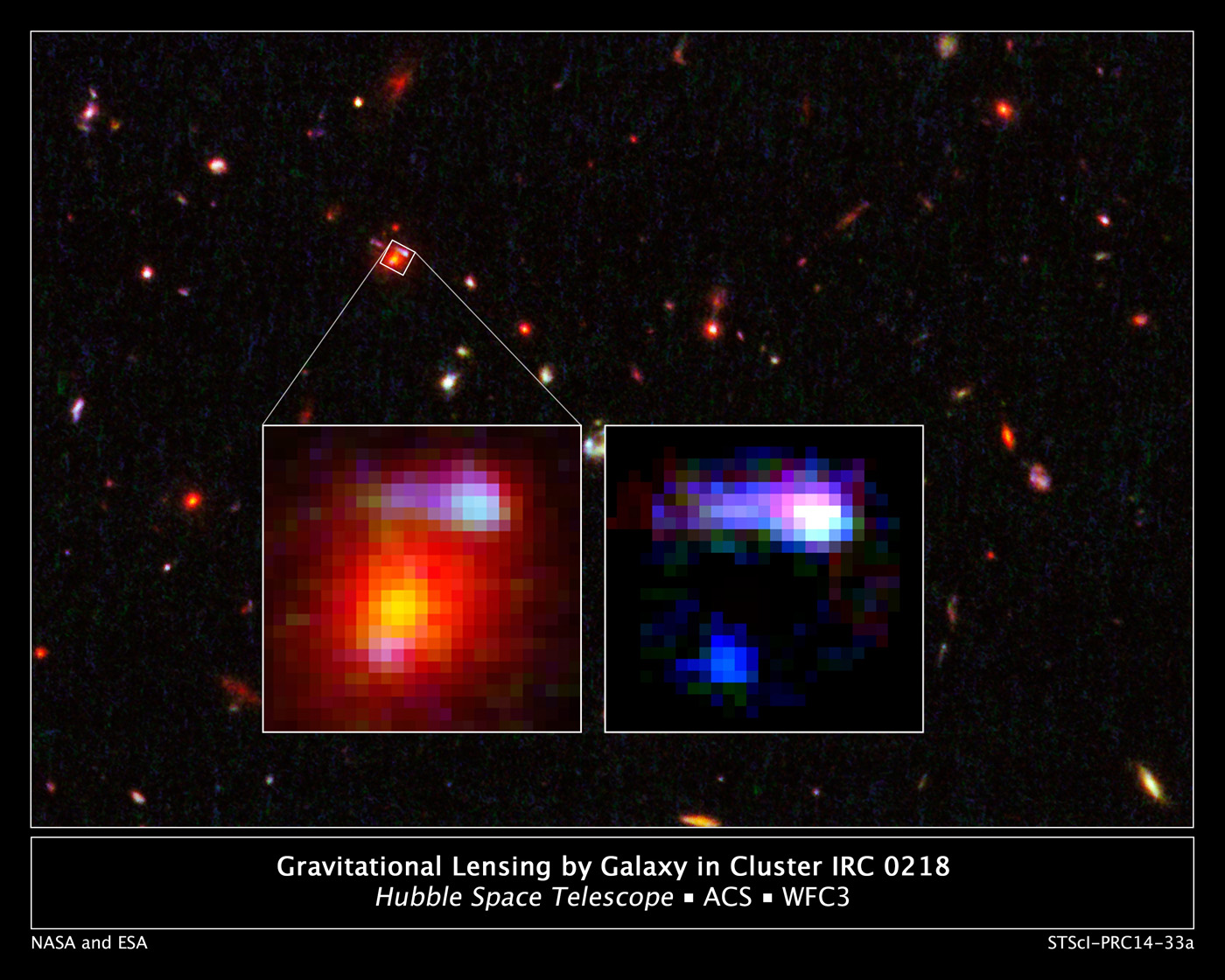Cosmic magnifying glass: Team finds the most distant ‘lensing galaxy’ yet
Credit: NASA; ESA; K.-V. Tran, Texas A&M University; and K. Wong, Academia Sinica Institute of Astronomy & Astrophysics)
An international team of astronomers led by Texas A&M University’s Kim-Vy Tran and using NASA’s Hubble Space Telescope has unexpectedly discovered the most distant cosmic magnifying glass yet, produced by a monster elliptical galaxy.
The galaxy existed 9.6 billion years ago, beating the previous record by 200 million years. It is known as a lensing galaxy because it is so massive that its gravity bends, magnifies and distorts light from objects behind it — a phenomenon called gravitational lensing. The object behind the cosmic lens is a tiny spiral galaxy undergoing a rapid burst of star formation whose light has taken 10.7 billion years to arrive here.
Seeing this chance alignment at such a great distance from Earth is a rare find, and Tran says locating more of these distant lensing galaxies will offer insight into how young galaxies in the early universe built themselves up into the massive dark-matter-dominated galaxies of today. Although dark matter cannot be seen, it accounts for the bulk of the universe’s matter.
“When you look more than 9 billion years ago in the early universe, you don’t expect to find this type of galaxy-galaxy lensing at all,” said Tran, lead researcher in the study and a member of the Texas A&M Department of Physics and Astronomy faculty and the George P. and Cynthia Woods Mitchell Institute for Fundamental Physics and Astronomy since 2009. “It’s very difficult to see an alignment between two galaxies in the early universe.
“Imagine holding a magnifying glass close to you and then moving it much farther away. When you look through a magnifying glass held at arm’s length, the chances that you will see an enlarged object are high. But if you move the magnifying glass across the room, your chances of seeing the magnifying glass nearly perfectly aligned with another object beyond it diminishes.”
#TAMUresearch


